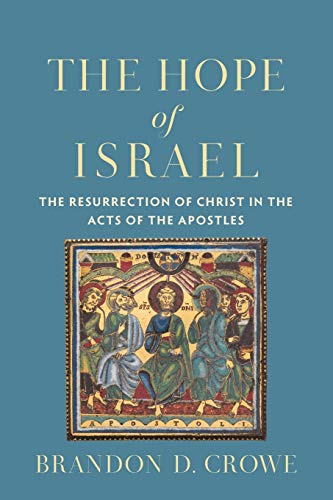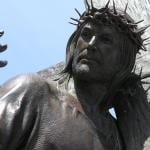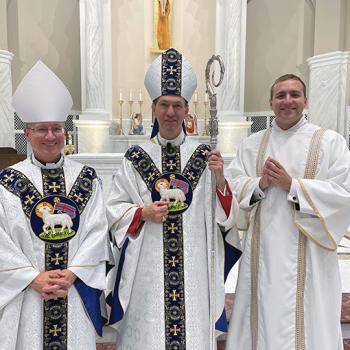The Hope of Israel: The Resurrection of Christ in the Acts of the Apostles is written by Dr. Brandon D. Crowe[1]. Dr. Crowe is an accomplished New Testament theologian and scholar who is a New Testament professor as Westminster Theological Seminary[2]. In addition to being a professor of the New Testament, he is also book review editor of the prestigious Westminster Theological Journal. His education includes a Master of Divinity from Reformed Theological Seminary and a Ph. D from the University of Edinburgh[3].

The Focus Of The Hope Of Israel
In the book that is the subject of this critique, Dr. Crowe focused on the resurrection as seen in the book of Acts[4]. After all, without the crucial event of the resurrection then Christianity really is no different than any other religion in the world. As Dr. Crowe states, “The resurrection makes all the difference”[5]. In the preface of the book Dr. Crowe states something that can become lost on some Christians. That is that the resurrection is what connects the Gospel of Luke with Acts.

He restates this, and the importance of the resurrection right at the beginning of chapter one[6]. Right away this is a strength of the book. The central act of the Gospel message is seen in all of its importance. Np matter what great deeds and acts that the Apostle Paul did he always connected it with the resurrection of our Lord[7]. In showing the centrality of the resurrection, Luke displays this as a turning point in history that brings to fruition the messianic age[8]. Dr. Crowe lays out a few reasons why this is the case. First and foremost, it acts as a bookend of sorts with the coming of the kingdom as well as the emergence of the Holy Spirit[9]. Secondly are the ramifications of the resurrection the whole of Christian theology[10]. Dr. Crowe admits that there has not been an extensive study of the resurrection in Acts such as what appears in his book. He does however give some strong resources for those who desire to engage in further study outside of the book[11].
Promise And Fulfillment
After summarizing the historical landscape of resurrection scholarship, Dr. Crowe discusses the need for the events described by Luke to have taken place[12]. He discusses it withing a theology of promise and fulfillment. Regarding this Dr. Crowe states, “Luke emphasizes the divine necessity (Dei; Gk. “it is necessary”) of certain events that had to take place for the accomplishment of eschatological salvation”[13].
Chapter two perhaps brings with the greatest strength to the book. In this Chapter Dr. Crowe describes the events of Pentecost and the first sermon of the infant church by Peter. In continuing with the theme of promise and fulfillment, Dr Crowe shows that the events of chapter two are a fulfillment of prophecies out forth by John the Baptist in Luke 3:16[14]. Luke 3:16 also draws a connection with Acts 2:1-4 and Acts 1:5 when it comes to the pouring out of the Holy Spirit[15]. The connection with the Old Testament book of Joel is also significant. Acts quotes Joel 2:28-32 from the Septuagint. This passage describes the latter days and Dr. Crowe makes the connection of the latter days with the outpouring of the Holy Spirit[16]. There is also great significance with Peter quoting from Psalm 16. This is not one of the most well-known if the messianic Psalms, but Dr. Crowe goes into depth about how Peter utilizes it to discuss the resurrection[17]. Dr. Crowe makes another great point when he connects Luke 23 with Acts 7 in discussion of Christ’s perfect obedience. He goes on to describe the resurrection is a result of perfect obedience[18]. Peter makes other speeches to the Jewish authorities, Cornelius, and others with his primary message being about the resurrection.

The Hope Of Israel And Implications
In Chapter three Dr, Crowe turns from Peter to Paul. Two major speeches of Paul are at Pisidian Antioch and to Herod Agrippa II[19]. These two events are what Dr. Crowe calls pillars as they are bookmarks that include the mission and work of Paul[20]. This chapter is the longest in the book, but there is so much detail given. One of the strengths of this chapter is the encounter of Jesus with Paul while Paul was on his way to Damascus to persecute Christians. We know this story well, but we fail to see the great teaching of the resurrection that this includes. The risen, i.e. resurrected, Christ appears to Paul and his whole life is changed[21]. This has a few implications. Since Paul saw the risen Christ, he is now qualified to be called an Apostle[22]. He is convinced that Jesus is the only way to salvation, and lastly, he becomes part, and identifies with the resurrected Lord[23]. An interesting point that Dr, Crowe makes comes after Paul has his encounter. The encounter left him blinded and he was commanded to get up. Essentially, he was in darkness, and he is now in light. It was type of resurrection though, to be clear, Dr. Crowe says that we cannot prove that was the intention if Luke[24].
Dr. Crowe dedicates chapter four to other voices of the resurrection in the book of Acts. Peter and Paul are the two major ones, but there are others that we often overlook. One such individual is James while the Jerusalem council was in session in Acts 15[25]. Dr, Crowe points out that James has support for the inclusion of the Gentiles by looking at Amos 9[26]. Though the connection is made there is much debate as to whether or not this is a valid interpretation of Amos in regard to James and Acts 15. Scholar Richard Bauckham is one such scholar who says that the connection is unwarranted. He points out that Acts 15:16 is looking forward to as “eschatological temple” while Amos 9:11 is looking toward the “restoration of a building”[27]. Dr. Crowe says that Baulkham’s theory is one that is worthy of consideration, but in the next paragraph he doubles down on his position and brings in 2 Samuel 7 in support of Amos 9[28]. In this regard this, in my opinion, is a weakness in the book.
Conclusion
In conclusion this book is one that is worth reading as it will give great incites on the resurrection. The resurrection is an event that changed the world and spawned the dawning of a new age. The strengths of the book are the analysis of Peter’s sermon on Pentecost and the connection of the fulfillment of the Holy Spirit. Luke has these passages in Luke 3 and Acts 2 respectively. The chapter on Paul in also string as Dr, Crowe dives deep into the evidence of the centrality of the resurrection in everything that Paul did. It is hard to find weaknesses in this book, but if I had to pick an area it would be in chapter four. There is no doubt that there are other connections with characters in Acts and the resurrection. It appears that Dr. Crowe perhaps tried a little two hard to make a stronger connection than what was present. This does not mean that one is not there, but it shouldn’t not be made to seem stronger than it appears. The situation with Amos 9 is a good example of this. Overall this book is needed to remind all of us of the importance of the resurrection,
Works Cited
Crowe, Brandon D. The Hope of Israel: The Resurrection of Christ in the Acts of the Apostles. Grand Rapids: Baker Academic, 2020.
www.wts.Edu/faculty/crowe/.
[1]. Brandon D. Crowe, The Hope of Israel: The Resurrection of Christ in the Acts of the Apostles (Grand Rapids: Baker Academic, 2020), iii.
[2]. Westminster Theological Seminary, “Faculty,” Edu and faculty and Crowe/.
[3]. Ibid.
[4]. Crowe, The Hope of Israel, ix.
[5]. Ibid.
[6]. Ibid., 3.
[7]. Ibid.
[8]. Ibid., 5.
[9]. Edu/faculty/Crowe/.
[10]. Crowe, The Hope of Israel, 5.
[11]. Ibid., 9.
[12]. Ibid., 15.
[13]. Ibid.
[14]. Ibid., 21.
[15]. Ibid.
[16]. Ibid., 22.
[17]. Ibid., 26.
[18]. Ibid., 29.
[19]. Ibid., 47.
[20]. Ibid.
[21]. Ibid.
[22]. Ibid., 48.
[23]. Ibid.
[24]. Ibid., 49.
[25]. Ibid., 87.
[26]. Ibid., 88.
[27]. Ibid., 90.
[28]. Ibid.













